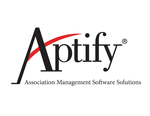What Is Association Management Software?
Association management software is a specialist application used to help associations, non-profit organizations, and clubs successfully manage their activities. It offers a consolidated platform for managing memberships and events, as well as communication and finances. At its foundation, association management software streamlines and automates administrative duties, freeing up time and resources for more strategic projects.
It reduces the need for traditional manual techniques of operations management, such as spreadsheets and paper systems. When comparing association management software, it is critical to analyze major aspects such as membership management, event management, communication tools, and financial management.
These capabilities enable associations to easily manage member information, plan and execute events, interact with members, and manage funds accurately. One of the key advantages of association management software is its ability to consolidate data and streamline operations. This makes it easier for associations to obtain crucial information, monitor operations, and make educated decisions. Furthermore, it has a user-friendly layout, making it simple for staff and members to access and use the software.
Furthermore, association administration software frequently connects with other systems, such as email marketing and accounting software, expanding its possibilities and facilitating data transmission. This connection can help associations save time and resources while increasing overall efficiency. When selecting an association management software, it is critical to examine its scalability and customization capabilities.
As associations expand and change, they want a software solution that can adapt to their changing requirements. Finally, association management software may help associations streamline their operations, increase communication and engagement with members, and manage their money more efficiently. Investing in the proper software can help associations improve their overall effectiveness and achieve success.
What Are The Recent Trends In Association Management Software?
Association management software has grown and evolved significantly in recent years, as companies and associations seek more efficient and effective ways to manage their operations. With the advancement of technology and the growing desire for seamless, online cooperation, the emphasis has switched to software solutions that provide a full set of capabilities built exclusively for association management.
One of the most significant changes in association management software is the shift to cloud-based solutions. This enables enterprises to access their data and tools at any time and from any location, making remote management and collaboration easier. Furthermore, cloud-based software provides greater flexibility and scalability, making it easier for associations to adapt their software as their requirements evolve.
Another trend in association management software is the combination of multiple tools and apps on a single platform. This eliminates the need for enterprises to employ multiple software packages to handle various elements of their operations, instead providing a unified solution. This connection may include services like membership administration, event planning, financial management, and communication tools.
With the growing use of data in decision-making, data analytics and reporting capabilities have become critical components of association management software. These technologies enable firms to monitor critical parameters, generate reports, and acquire useful insights into their business operations. With this information, associations may make better decisions, identify areas for growth, and track their progress. User experience is becoming a primary focus for association management software companies.
As more people become digital natives, there is a greater demand for user-friendly, intuitive software. Many software systems now include configurable dashboards, drag-and-drop interfaces, and streamlined navigation, making it simple for staff and members to utilize.
Finally, the usage of mobile devices in association management has increased, resulting in the creation of mobile-friendly software.This enables associations to manage their operations on the go, communicate with members in real time, and access critical data and reports via mobile devices.
Benefits Of Using Association Management Software
Association Management Software (AMS) is a specialized application for streamlining and managing the administrative activities connected with member-based organizations. From membership administration to event planning, financial management, and communication, AMS provides a complete solution to help associations run more efficiently and successfully.
But what are the special advantages of adopting association management software? Let's have a closer look.
1. Single Membership Management: AMS offers a single platform for managing all aspects of membership, such as new member sign-ups, renewals, and information updates. This streamlines the procedure and decreases the likelihood of errors, ensuring that member data is always correct and up to date.
2. Automates Routine Processes: AMS enables associations to automate routine processes including membership renewals, event registrations, and email communications. This not only saves significant time for association employees, but it also decreases the possibility of human error. Furthermore, automation guarantees that all members receive timely and consistent communication, which is critical to member engagement and retention.
3. Improved Event Planning: Event planning is an important part of association management, and AMS may assist simplify the process. AMS simplifies event preparation by allowing you to create registration forms, manage attendance lists, collect money, and send event reminders. It also enables improved tracking of event success indicators and ROI.
4. Improved Financial Management: AMS provides a variety of financial management capabilities, including invoicing, payment processing, and budget tracking. These tools assist associations manage its finances by ensuring that membership dues and event revenues are collected on time. AMS can also provide customized financial reports, which help associations better understand their financial health.
5. Effective Communication: Clear communication is essential for member engagement and satisfaction. AMS offers a variety of communication channels to assist associations stay in touch with their members, including email, SMS, and online forums. It also enables targeted communication, which makes it easier to provide relevant information and updates to certain member groups.
6. Data Security: AMS has strong security measures to protect sensitive member data, such as personal information and financial details. With data encryption, firewalls, and regular backups, associations can rest assured that their members' information is safe and secure.
Important Factors to Consider While Purchasing Association Management Software?
Association management software (AMS) is an essential tool for any organization seeking to streamline and automate operations, boost member involvement, and improve overall efficiency. However, with so many AMS options available on the market, it might be difficult for customers to choose the best one. To ensure that you make an informed and wise decision, here are some key considerations when selecting association management software.
1. Understand your organization: specific objectives and goals before beginning your search for an AMS. Consider the size of your organization, the number of members, the services and events you provide, and your budget. This will allow you to narrow down your possibilities and select an AMS that is specific to your organization's needs.
2. User-friendliness And Ease Of implementation: The AMS you select should have an intuitive interface and be simple to set up. This will save you time and resources when training your team to utilize the program and shorten the learning curve. Look for demos and free trials to try the product before purchasing.
3. Integration Capabilities: Effective association management necessitates the seamless integration of several systems and technologies. Look for an AMS that works with other software you already use, like as accounting, email marketing, and website management tools. This will help you minimize data duplication and maintain seamless operations.
4. Membership Management Features: One of the most important responsibilities of an AMS is to maintain your organization's membership database. Make sure the software has capabilities such as membership profile management, online member applications and renewals, and the ability to track membership levels and fees.
5. Event Management Capabilities: Events are an important part of any association, so your AMS should have strong event management capabilities. Event registration, ticketing, payment processing, and event analytics are all useful aspects for planning and executing successful events.
6. Reporting And Analytics: Data is critical for making informed decisions, thus your AMS should include robust reporting and analytics capabilities. Look for software that provides real-time insights into membership patterns, event attendance, and financial data to help you track your association's progress.
7. Customer Support And Training: Because an AMS is a long-term investment, you want to ensure that you have consistent customer support and training when needed. Look for software suppliers who provide a variety of support options, including live chat, phone, and email help, as well as a comprehensive knowledge base and training resources.
What Are The Key Features To Look For In Association Management Software?
When selecting the proper association management software for your firm, there are a few crucial things to consider. These features are critical for ensuring that the software fulfills your specific requirements and allows you to efficiently administer your association. As you assess several solutions, consider the following critical features:
1. Membership Management: One of the key benefits of association management software is the ability to manage your members. Look for software that will allow you to effortlessly maintain and update member information, send out membership renewal reminders, and manage member dues and payments.
2. Event Management: Associations frequently organize events like conferences, workshops, and webinars. Look for software that provides event management tools like registration, ticketing, and attendance tracking. This will help to streamline your event planning and provide a seamless experience for your members.
3. Communication Tools: Effective communication is essential in every relationship. Look for software that has a number of communication methods, including as email and text messaging, to help you stay in touch with your members and keep them informed of essential updates, events, and news.
4. Financial Management: Association management software should provide comprehensive financial management functions such as budget tracking, invoicing, and reporting. This will allow you to better manage your association's finances and ensure financial stability.
5. Customization Options: Each association is unique, and your software should be able to meet your exact requirements. Look for software that allows you to tailor features and workflows to your association's needs.
6. Integration Capabilities: Your association management software should be compatible with other tools and platforms you use, such as email marketing, accounting, and social media. This will help to streamline your operations and provide a smooth experience for both you and your members.
7. User-Friendly Interface: The program should be simple to use and understand for both you and your team. A user-friendly interface saves time and effort during training while simultaneously increasing member participation.
8. Security Measures: As with any product, security should be a major priority. To protect your association's sensitive information, look for software that includes rigorous security features like data encryption, user authentication, and regular backups.
9. Technical Support: Finally, ensure that the software manufacturer has an effective customer support system. Look for a workforce that is attentive, knowledgeable, and ready to help you with any technological challenges that may emerge. By keeping these essential aspects in mind, you can guarantee that you choose association management software that fulfills your individual requirements and allows you to efficiently run your organization. We hope this information was useful in your software evaluation process.
Why Do Businesses Need Association Management Software?
Association Management Software (AMS) has emerged as a vital tool for modern enterprises that manage associations, whether they are trade associations, professional organizations, or any other sort of membership-based organization. This software is intended to streamline and automate a variety of tasks, including membership administration, event planning, communication, and financial tracking, making it an important investment for any group.
One of the primary reasons businesses want AMS is for effective membership management. AMS enables organizations to effortlessly track and manage member data, such as contact information, membership levels, and payment history. This not only saves time and effort for association staff, but also ensures that member information is correct and up to date.
Furthermore, AMS has strong event planning features, making it easier for organizations to schedule and manage events such as conferences, webinars, and networking opportunities. From registration and payment processing to attendee tracking and post-event follow-ups, AMS simplifies the event planning process for associations, resulting in enhanced productivity and improved member experiences.
Communication is also an important component of association management, and AMS offers a variety of communication tools, including email marketing, targeted messaging, and discussion forums, to keep members interested and informed. This enables businesses to establish close relationships with members and keep them informed about the association's activities and ambitions.
Furthermore, AMS has financial management tools that enable organizations to track membership dues, event fees, and other sources of revenue, as well as manage spending, generate reports, and send invoices. This improves financial transparency and allows firms to make more educated decisions based on reliable financial facts.
Another important consideration for organizations when using AMS is the security and privacy of member data. With AMS, organizations can ensure that critical member information is secure and only available to authorized individuals, providing members with peace of mind and strengthening their faith in the organization.
How Much Time Is Required To Implement Association Management Software?
The implementation time for association management software varies depending on a number of factors, including the program used, the size of the association, and the complexity of its activities. On average, it takes between a few weeks and a few months to fully implement and functionalize the software. Before delving into the timeline for implementation, it is critical to understand the procedures involved.
First, the association must choose a good software solution that fulfills its specific goals. This can take anywhere from a few days to a few weeks, depending on how much time is spent researching, demoing, and making decisions. After selecting a program, there are four primary steps in the implementation process. The first phase is data migration, which involves moving all existing data from spreadsheets or old software to the new system.
This might be a time-consuming operation, but it is critical to verify that all data is correctly sent. The second stage is to configure the software for the association's specific needs. This includes creating member profiles, membership kinds, payment methods, and other customization possibilities.
The time necessary for this process varies according to the association's complexity and size. The third phase is to train the association's staff and members on how to successfully use the software. This may take a few weeks, depending on the amount of users and their familiarity with technology. The final step is testing and launch, in which the association must test the system to ensure that it functions properly and that all essential functionalities are in place.
This can take anywhere from a few days to many weeks, depending on the system's complexity. In conclusion, the implementation time for association management software might range from a few weeks to a few months, depending on a number of criteria. To fully realize the software's potential, associations must plan ahead of time and dedicate adequate time and resources for a seamless deployment procedure.
What Is The Level of Customization Available In Association Management Software?
The level of customization available with Association Management Software (AMS) varies substantially depending on the platform and its capabilities. However, most AMS choices provide a high level of flexibility to meet the unique needs and standards of various groups. One of the primary advantages of utilizing AMS is the opportunity to customize the program to meet the specific demands of your group.
This implies that your organization can personalize the software to reflect your brand and add your own distinct processes and workflows. Customization possibilities range from simple adjustments like adding your organization's logo and colors to more difficult ones like developing automated procedures and member communication templates.
Some AMS solutions also allow you to design custom fields and data structures to meet your association's data management requirements. Furthermore, certain AMS alternatives integrate with other applications and platforms, allowing for even more process flexibility and optimization. You may be able to combine your AMS with accounting software, event management tools, or online payment methods.
However, it is crucial to note that the level of customization possible may be determined by your association's budget and resources. Some AMS choices may be more expensive or need extra technical knowledge to customize, whereas others may provide more user-friendly and cost-effective customization possibilities.
Overall, when selecting an AMS for your association, it's critical to evaluate the level of customisation available and establish whether it meets your group's needs and resources. This will ensure that you get the most out of your AMS and optimize its benefits for your organization.
Which Industries Can Benefit The Most From Association Management Software?
Association Management Software (AMS) is a complete solution that enables various organizations to effectively manage their membership, events, money, and communication. While AMS may appear to be a one-size-fits-all solution, it does not help all industries equally. In this buyer's guide, we'll look at which sectors can benefit the most from Association Management Software and how it can help them optimize their procedures.
1. Trade Associations: Trade associations are groups that represent a certain industry, including its products and services. These organizations are in charge of upholding industry standards, providing useful resources, and facilitating networking opportunities for their members. A trade association's data, events, and finances can be difficult to manage when it has hundreds of members. This is where AMS comes into play. AMS enables trade associations to improve their membership process, track member engagement, and manage event registrations and payments more efficiently.
2. Professional Associations: Professional associations serve professionals in certain fields such as law, medicine, and accounting. These associations provide certifications, continuing education opportunities, and networking events to their members. AMS can assist professional associations by offering a centralized platform for managing membership data, tracking continuing education credits, and improving communication between members and the association.
3. Non-profit Organizations: Nonprofit organizations rely largely on donations and grants to further their mission. AMS can help these groups manage their donors, track donations, and plan fundraising activities. This enables them to concentrate on their objective while spending less time on administrative responsibilities.
4. Chamber of Commerce: Chambers of Commerce exist to promote and support businesses within a certain geographic area. These organizations frequently plan networking events, workshops, and trade exhibits for their members. Chambers of commerce can use AMS to manage their membership databases, event registrations, and payments, making it easier to promote and support local businesses.
5. Religious Organizations: Religious groups, such as churches and mosques, have a significant membership and rely on donations to fund their activities. These organizations can use AMS to easily manage membership data, track donations, and communicate with members. This not only saves time and effort, but also improves member involvement.
6. Fraternities And Sororities: Fraternities and sororities are student groups that provide academic support and social events for its members. These groups can use AMS to effortlessly manage their membership data, track dues and fees, and plan events and meetings. This allows them to provide a better experience for their members while maintaining a strong feeling of community.
Conclusion
After thoroughly researching and analyzing many possibilities, it is evident that selecting the best association management software for your firm can significantly improve operations and productivity. With the ever-increasing needs of operating an association, a dependable and effective software solution is essential. Throughout this tutorial, we've covered the key features and factors to consider when evaluating association management software.
Functionality and customization possibilities, as well as pricing and support, are all important considerations when making an informed decision. To identify which software will best meet your objectives, you must first thoroughly assess your organization's needs and processes. Taking the time to thoroughly investigate and analyze several possibilities can guarantee that you make the right decision and avoid additional money or headaches in the future.
We hope this article gave you a thorough understanding of association management software and its benefits. Whether you're a tiny association looking to streamline operations or a large organization looking to boost member engagement, there's a software solution for you.
By carefully examining your requirements and taking the time to investigate and compare numerous solutions, you may select the ideal association management software to help your organization succeed. Remember that investing in the proper software means investing in the success of your organization.






















